Wild Cat Breeds: Meet 4 Domesticated Wild Breeds
Thinking of adopting a wild breed? Learn more about domesticated wild breeds and what it takes to keep them as pets.
Thinking of adopting a wild breed? Learn more about domesticated wild breeds and what it takes to keep them as pets.
by Savannah Admire, | July 3, 2023

Jaki Portolese / Stocksy
If you’ve fantasized about having a wild cat as a pet (just like Jasmine in Aladdin), you may have heard of domesticated wild cat breeds. Created by crossing a domestic cat with a small wild feline species, these cats were bred to look exotic but act as tame as any other house cat. These breeds, also known as “cat hybrids,” still have wild traits, however, and require a lot more care and attention than most domestic cats.
Here’s everything you need to know about wild domestic cat breeds.
Cats have not been domesticated nearly as long as dogs, which is why they retain some of their more wild traits, like their stealthiness and hunting instincts. Jungle cat hybrids are even less tame than traditional house cats because they are more recently descended from wild cats.
Domesticated wild cat breeds are a cross between a wild cat, like a Serval or Asian Leopard, and a domestic cat. These cats were bred to create tame cats with the personalities of typical house cats mixed with the exotic and stunning appearances of wild cats.
These cats are specifically bred to be sold as pets, often for thousands of dollars. Breeders often promise that these wild house cats are tame, but they have no way of knowing what traits or qualities have been bred out of each generation.
Later generations of domesticated wild cat breeds tend to have fewer traits of their wild ancestors, but they often still have more wild qualities than most domestic cats. While these cats can be kept as pets, they require significantly more care, exercise, and attention than the average house cat, so think twice before adopting one of these breeds unless you have the time to commit to their care.
Domesticated wild cats can have many of the same traits as regular house cats, like being affectionate and loyal to their human parents, but these cats also retain more of the wild traits of their exotic ancestors.
Hybrid cat breeders mark each generation with F followed by a number; the number indicates how far removed the cat is from their wild ancestor. For example, an F1 cat is from the first generation and will likely still require a diet of raw meat and be much wilder than later generations. Generations labeled F4 or later are considered domesticated jungle cats, but they often still possess many of the traits and behavioral issues associated with previous generations.
Domestic wild cats are bred to have the unique coloring and appearance of their wild ancestors, which can include spots or mottling similar to that of a leopard or cheetah.
While domestic wild cat breeds can still have wild instincts and be very mischievous, these cats can also be loving and cuddly with their human parents. These breeds tend to be highly intelligent and can be trained to learn tricks — and, in fact, investing time and energy in training your domestic wild cat as a pet can help reduce destructive behaviors.
Unlike most cats who are content to laze around the house each day and entertain themselves, domestic wild breeds need attention, mental stimulation, and enrichment. Invest in puzzles, games, and new toys in a variety of textures and shapes to keep them occupied.
Because of their active and athletic nature, wild house cats also need regular exercise. These breeds can benefit from leash training so they can accompany you on daily walks. Make sure to have plenty of places in your home for them to climb, scratch, and play. If your domestic wild cat doesn’t have these designated spaces, they may turn their attention to destroying your furniture and other items in your home.
There are domesticated wild cat breeds that you can adopt from a rescue or shelter if you are ready to commit to their care. But if you want a cat with a wild appearance that is still fully domesticated, consider other breeds that look wild but have the temperament of a traditional domestic cat.
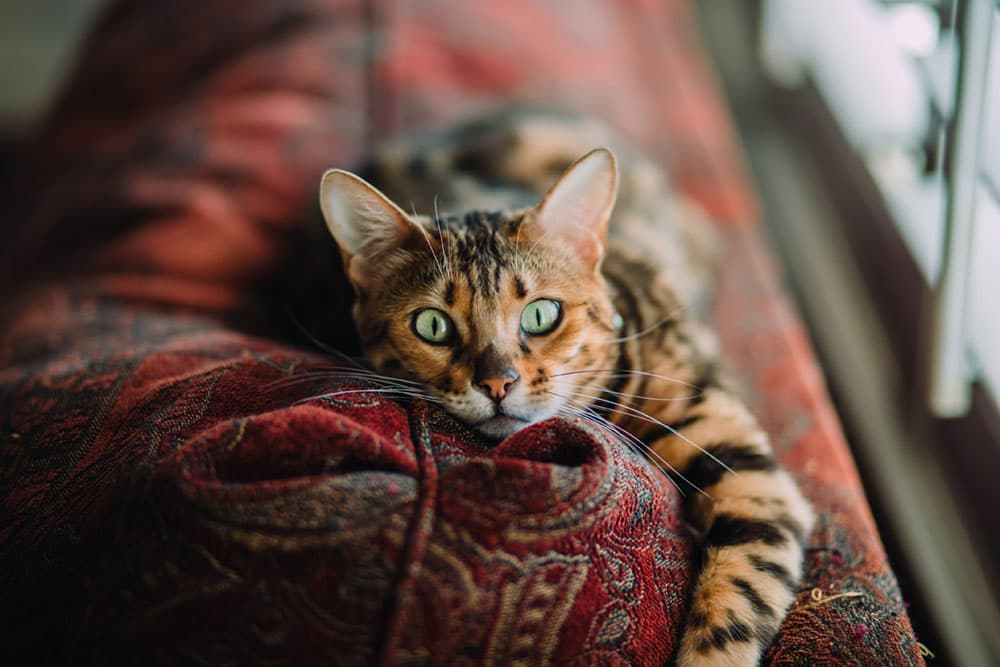
Caleb Woods / Unsplash
One of the most popular domesticated wild cat breeds is the Bengal, which is a cross between an Asian Leopard and a domestic cat (usually an Egyptian Mau). The Asian Leopard is one of the smallest wild cats, and this hybrid is incredibly energetic and intelligent. Like most domesticated wild cats, Bengals benefit from training, tons of exercise, and plenty of mental stimulation. They retain the Asian Leopard’s coat pattern, which features spots and marbling, and enjoy playing in water and climbing.
Height: 13 to 16 inches
Weight: 6 to 15 pounds
Browse for Bengals (and their mixes) for adoption

Gennadiy Naumov / Shutterstock
A combination of the Serval and a domestic cat, the Savannah is the second most popular wild hybrid cat breed. With their stunning coat, this cat looks much like their wild ancestor, a spotted, long-legged wild cat from sub-Saharan Africa. The Savannah is extremely adventurous and enjoys exploring but can also be very affectionate and loyal to their human parents. Their coats can be brown, silver, snow, or charcoal, and unlike the similar fully-domestic Ocicat, these cats tend to be on the larger side, weighing up to 25 pounds.
Like the Bengal, the Savannah is a wild cat hybrid, which means they may retain many wild traits and require extra care and attention. Some states and cities have laws against owning these wild cats as pets, so be sure to check your local regulations before adopting a Savannah.
Height: 16 to 18 inches
Weight: up to 25 pounds
Browse for Bengals (and their mixes) for adoption

Elisa Putti / Shutterstock
If you want a cat with a wild — even fairytale-like — appearance but all the cuddly traits of a traditional domestic cat, consider the Norwegian Forest Cat. Unlike the Bengal and Savannah, this breed is fully domesticated and originated in Norway, where they lived in the forests for hundreds of years. With their large, muscular bodies and coats in a variety of colors and patterns, the Norwegian Forest Cat makes for the perfect snuggly companion, friendly and gentle with other people and animals. Instead of wild cats, pets like the Norwegian Forest Cat are a great choice for first-time pet parents or those with children.
Height: 12 to 18 inches
Weight: 8 to 18 pounds
Browse for Norwegian Forest Cats (and their mixes) for adoption

Wellington Silva / Pexels
Another domestic cat breed with a wild appearance is the massive Maine Coon. These large cats are very graceful despite their size, and their tufted ears, fluffy tails, and luxurious coats are reminiscent of wild felines. Known as the “dogs of the cat world,” the Maine Coon is a gentle giant, affectionate toward their human parents and other pets in the house, making them a fantastic choice for families with children. Instead of wild cat breeds, domestic cats like the Maine Coon give the appearance of wildness with the cuddly temperament of a tame house cat.
Height: 10 to 16 inches
Weight: 9 to 22 pounds
Browse for Maine Coons (and their mixes) for adoption
Domesticated wild cats are beautiful pets, but they generally require more care than most traditional house cats, making them a poor choice for most cat parents. Be sure to consider your lifestyle and whether you have the time and space to devote to a domesticated wild cat breed before adopting one.
Intelligent: Nearly wild cat breeds are often very intelligent and affectionate, capable of learning tricks and adapting well to training.
Higher-energy and active: These breeds can also be very playful and active, which can make them great companions for people who lead active lifestyles.
Up for adventures: With the right amount of leash training, they can join you on walks and hikes.
Beautiful appearance: Domesticated wild cats also have gorgeous coloring, thanks to their exotic ancestry, giving them the elegant appearance of wild cats.
On the other hand, there are other considerations before you adopt a domesticated wild cat:
Expensive: Nearly wild cat breeds can be incredibly expensive, often costing several thousand dollars from breeders.
Need exercise: They also require a lot of attention and exercise and may exhibit destructive and even dangerous behaviors if not properly trained and physically and mentally stimulated.
Special diets: These cats also tend to have costly diets, as they often require high-quality cat food and raw meat.
Health issues: They also have a propensity to develop health issues that may require expensive surgery or treatment.
Exotic vet care: In addition, not all vets care for domesticated wild cats, so it may be challenging to find proper healthcare for your cat. There are also no rabies vaccines approved for use in hybrids.
Behavior issues: Some nearly wild cat breeds can also be quite territorial and aggressive, so if you have other pets in the home or small children, these cats are likely not for you, as they have been known to “hunt” and even hurt others in the home who they view as prey.
Destructive: These breeds can be very destructive, and many never adapt to using a litter box, resulting in constant cleanup.
Breeding domesticated wild cat breeds is often unethical, especially because there is little to no oversight for these breeding facilities. It’s always best to adopt a cat in need.
Domesticated wild cat breeds are stunningly beautiful pets, but they require a significant amount of extra care and attention making them not ideal pets for most pet parents. Before adopting a Bengal or Savannah cat, be sure to consider whether you have the time and budget for their unique diet, veterinary care, and physical and mental exercise.
If you wish to adopt a cat with a wild appearance that is fully domesticated, consider other breeds like the Norwegian Forest Cat and Maine Coon, both of which will be easier to care for and will do better with other humans and animals in the home.
Domesticated wild cats often retain wild behaviors of their exotic ancestors, including a raw meat diet, not using a litter box, and being more vocal than house cats.
They can be pets, but are very challenging to care for, requiring a lot of exercise, mental stimulation, frequent vet visits, and training to reduce destructive behavior.
Domesticated wild cats need a lot of exercise, both physical and mental, as well as plenty of room to run and play, extra veterinary care, and a specialized diet.
Yes, wild cat hybrids can be more challenging to train and keep as pets. These breeds have wild personalities compared to most domestic cats, but are intelligent and can be trained. They can be challenging to socialize with other pets.
Challenges include their tendency to urinate outside a litter box. They’re also known to bite, even while playing, and may attempt to attack other pets in the home.
Domesticated: Evolution in a Manmade World
Importing wild or hybrid cat species
Domestic Cats: Their History, Breeds and Other Facts
Behavior and health issues in Bengal cats as perceived by their owners: A descriptive study
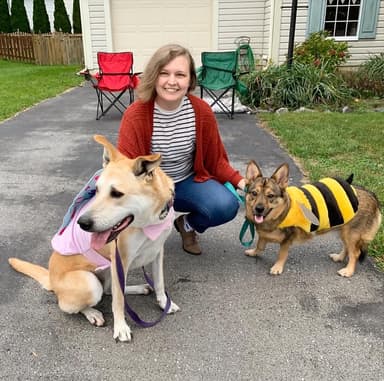
Savannah Admire is a writer, editor, and pet parent to two dogs and a cat. When she’s not writing, you can find her reading, playing Animal Crossing, or being an obnoxious nerd about her favorite movies and TV shows. She lives in Maryland, where she constantly debates whether or not to get a third dog.
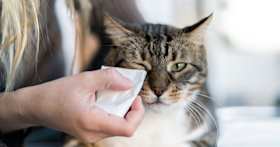
Pet Wellness

Adoption Advice

Adoption Advice

Adoption Advice
Here are some important factors to consider when deciding how big to grow your feline family.

Adoption Advice
Preparing for a kitten’s first vet visit. Learn about what you can expect from a vet visit and what you should do to ensure it goes smoothly.

Adoption Advice
Looking for a reputable cat shelter? Learn more about how you can find a cat shelter that meets your expectations.
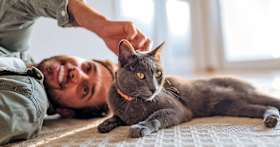
Adoption Advice
You can give a diabetic cat a long and happy life, just by understanding their special needs.
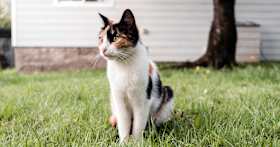
Adoption Advice
Life with an FIV+ cat isn’t so different after all

Adoption Advice
Thinking of adopting a cat? Learn more about the costs of pet parenthood.

Pet Wellness
The thought of trying to brush your cat’s teeth may seem daunting. But keeping their teeth clean is more important than you may think.
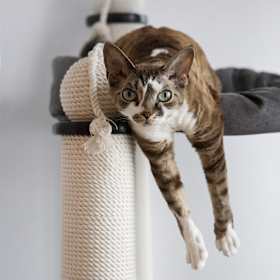
Adoption Advice
Thinking of adopting a cat? Study up and learn more about what to expect with a new cat around the house.
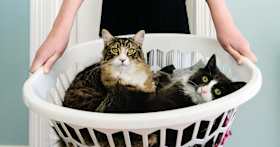
Adoption Advice
Thinking about adding another cat to your home? Here’s how to expand your family, minus the drama.